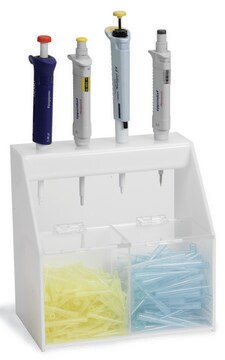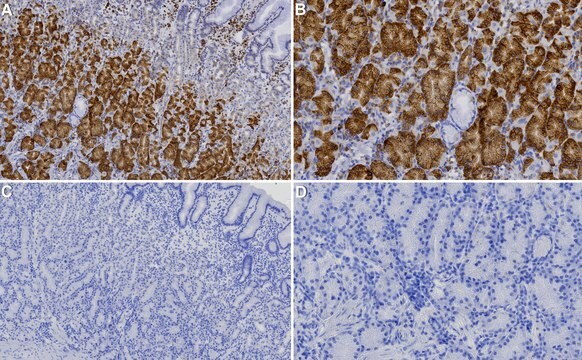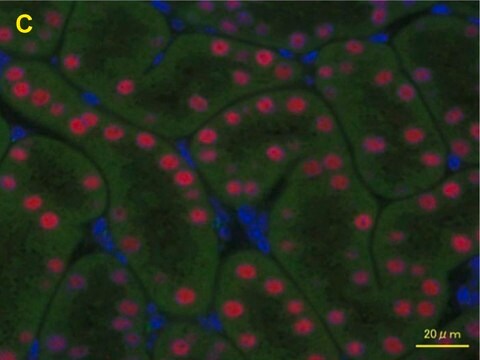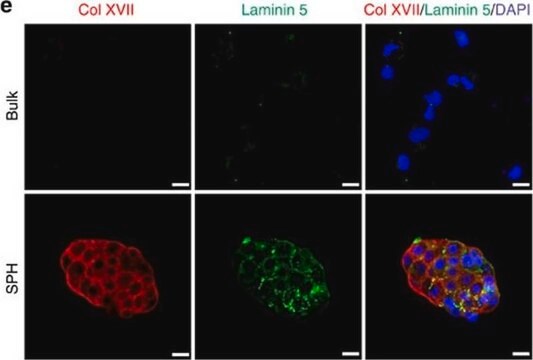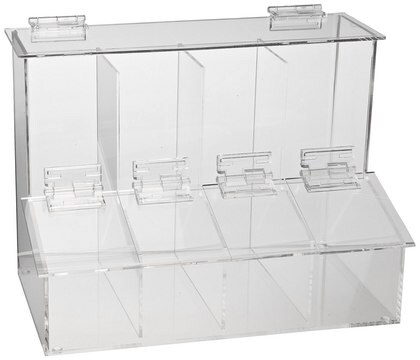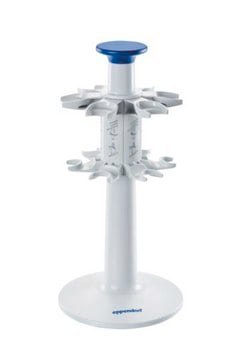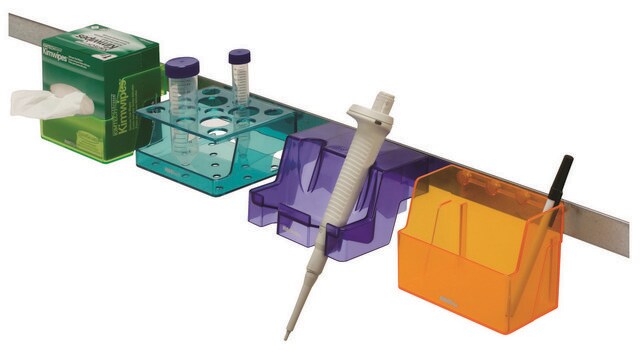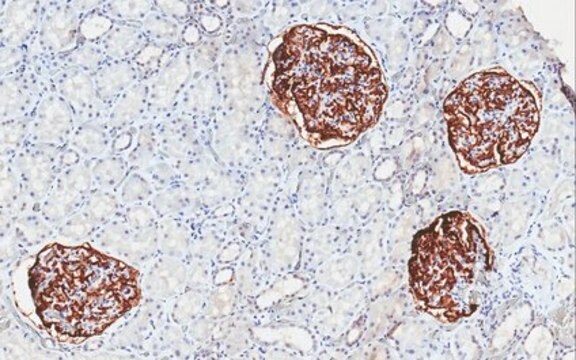MABT1460
Anti-LAMC2 Antibody
About This Item
ICC
IHC (p)
WB
immunocytochemistry: suitable
immunohistochemistry (formalin-fixed, paraffin-embedded sections): suitable
western blot: suitable
Produits recommandés
Source biologique
mouse
Niveau de qualité
Conjugué
unconjugated
Forme d'anticorps
purified antibody
Type de produit anticorps
primary antibodies
Clone
P2H, monoclonal
Poids mol.
calculated mol wt 130.98 kDa
Espèces réactives
mouse, human
Conditionnement
antibody small pack of 100 μL
Technique(s)
ELISA: suitable
immunocytochemistry: suitable
immunohistochemistry (formalin-fixed, paraffin-embedded sections): suitable
western blot: suitable
Isotype
IgG2a
Numéro d'accès UniProt
Conditions d'expédition
dry ice
Température de stockage
2-8°C
Modification post-traductionnelle de la cible
unmodified
Informations sur le gène
human ... LAMC2(3918)
Description générale
Spécificité
Immunogène
Application
Evaluated by Immunocytochemistry in A431 cells.
Immunocytochemistry Analysis: A 1:500 dilution of this antibody detected Laminin-5 subunit g2 (LAMC2) in A431 cells.
Tested Applications
Western Blotting Analysis: 1 μg/mL from a representative lot detected LAMC2 in lung squamous cell carcinoma cell lysates (Courtesy of Kaoru Miyazaki, Ph.D., KIhara Institute for Biological Research, Yokohama City University, Japan).
Western Blotting Analysis: A representative lot detected LAMC2 in Western Blotting applications (Miyazaki, K., et. al. (2016). Cancer Sci. 107(12):1909-1918).
Immunohistochemistry (Paraffin) Analysis: 10 μg/mL from a representative lot detected LAMC2 in normal human skin, skin cancer, normal breast, and breast adenocarcinoma tissues (Courtesy of Kaoru Miyazaki, Ph.D., KIhara Institute for Biological Research, Yokohama City University, Japan).
ELISA Analysis: 5 μg/mL from a representative lot detected LAMC2 in Lm-gamma2pf and Lm-gamma2 in Lm332 condition medium from Lm332-expressing HEK293 cells (Courtesy of Kaoru Miyazaki, Ph.D., KIhara Institute for Biological Research, Yokohama City University, Japan).
Immunocytochemistry Analysis: A representative lot detected LAMC2 in Immunocytochemistry applications (Miyazaki, K., et. al. (2016). Cancer Sci. 107(12):1909-1918).
Immunohistochemistry Applications: A representative lot detected LAMC2 in Immunohistochemistry applications of lung squamous cell carcinomas and lung adenocarcinomas (Courtesy of Kaoru Miyazaki, Ph.D., KIhara Institute for Biological Research, Yokohama City University, Japan).
Note: Actual optimal working dilutions must be determined by end user as specimens, and experimental conditions may vary with the end user
Forme physique
Stockage et stabilité
Autres remarques
Clause de non-responsabilité
Vous ne trouvez pas le bon produit ?
Essayez notre Outil de sélection de produits.
Code de la classe de stockage
12 - Non Combustible Liquids
Classe de danger pour l'eau (WGK)
WGK 1
Point d'éclair (°F)
Not applicable
Point d'éclair (°C)
Not applicable
Certificats d'analyse (COA)
Recherchez un Certificats d'analyse (COA) en saisissant le numéro de lot du produit. Les numéros de lot figurent sur l'étiquette du produit après les mots "Lot" ou "Batch".
Déjà en possession de ce produit ?
Retrouvez la documentation relative aux produits que vous avez récemment achetés dans la Bibliothèque de documents.
Notre équipe de scientifiques dispose d'une expérience dans tous les secteurs de la recherche, notamment en sciences de la vie, science des matériaux, synthèse chimique, chromatographie, analyse et dans de nombreux autres domaines..
Contacter notre Service technique